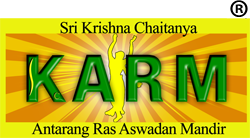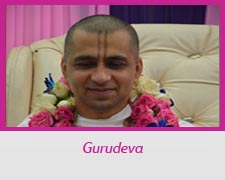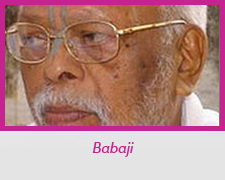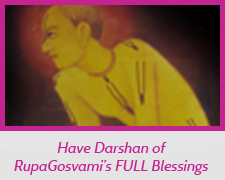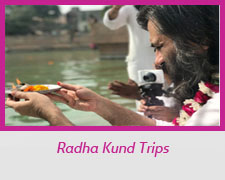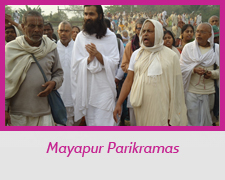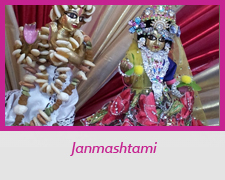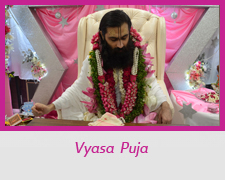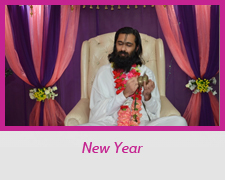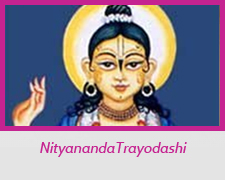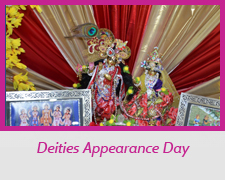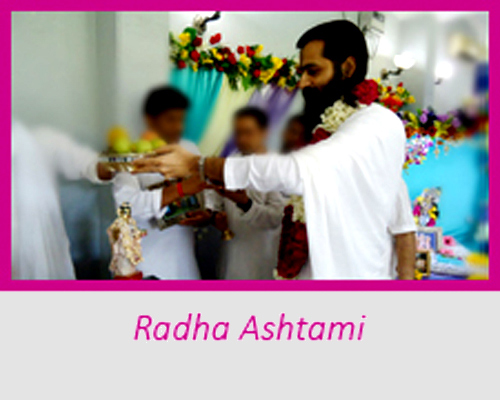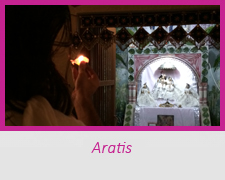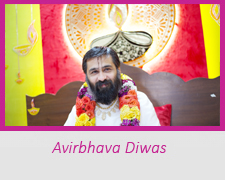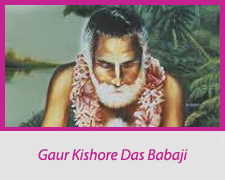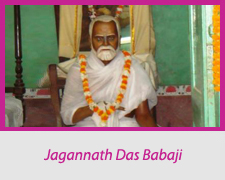Sad Gosvämés in Nåsiàha Deva Altar !?!
Temple (Altar) is the very heart of a devotee. He daily performs worship, Äraté, Bhoga offering etc. there. Therefore, it is needless to say that he will have 100% clarity about:
- Who his Iñöa Deva are,
- Who the Äcäryas are…!
In the realm of spiritual practice, adherence to traditional practices and rituals plays a pivotal role in connecting devotees to their chosen Deities. However deliberate modifications in well-established norms can lead to misguided practices, as highlighted by the foolish act of placement of pictures of the Six Gosvämés on Altars other than Rädhä-Kåñëa’s, such as on the Altar of Nåsiàha Deva in modern so called gauòéya vaiñëava institutions. This issue sheds light on the significance of maintaining the sanctity of worship within the Gauòéya Vaiñëavism tradition.
Addressing this matter, it’s crucial to acknowledge that Lord Nåsiàha Deva is a formidable and awe-inspiring form of the Lord, Who is worshipped in the mood of awe and reverence in the Vaikuntha Planet. Revered by countless devotees, Lakñmé Devé herself approaches Him with trepidation. It’s thus perplexing to see the pictures of the Six Gosvämés, who are eternal manjaris and dedicated servants of Rädhä and Kåñëa in the mood of sweetness, on the Altar of Lord Nåsiàha Deva. This incongruity raises questions about the appropriateness of such an arrangement.
The Six Gosvämés are the eternal servants of Çré Rädhä Kåñëa, serving Them in an esoteric way in the nikuïjas (pleasure groves) of Våndävana. Their commitment to these Deities is unwavering and forms the core of their spiritual practice. Placing their images on the Altar of Lord Nåsiàha Deva, a form with which they have no connection, Whom they never serve, raises concerns about the intentions behind such actions. Pictures of only those saints should be put on Lord Nåsiàha Deva Altar, who are eternally serving Him.
Imagine putting Hanumäna Jé on the altar of Lord Nåsiàha Deva! Or on the altar of Rädhä-Kåñëa! Just as Hanumäna Jé is not put on the altar of Rädhä Kåñëa because He is the servant of Lord Räma, similarly Ñaò Gosvämés are not put on the altar of Lord Nåsiàha Deva, as they are dasés of Çré Rädhä-Kåñëa.
It is essential to recognize that each sampradäya has its distinct guidelines and practices. Devotees of Rädhä and Kåñëa, such as Nimbärka, Haridäsé, and Rädhä Vallabha Sampradäyas, possess deep devotion for their chosen forms of worship. Imagine placing the image of Haridäsé on the Altar of Nåsiàha Deva or Lord Räma – it would be met with confusion and disapproval by the respective Sampradäyas.
Placing someone on the altar of a Particular Deity means that they must have some service there. Çréla Rüpa Gosvämé is having service, all Ñaò Gosvämés are having service for Rädhä-Kåñëa. They have no service for Lord Nåsiàha Deva. They are going to remain idle eternally on the altar of Lord Nåsiàha Deva. No one is put simply to occupy space on the altar.
Imagine Ñaò Gosvämés asking – “Why have you put us here on Lord Nåsiàha Deva Altar? We have got nothing to do here. We have got no sevä here. Why you have put us here?” and we will have no answer. This is nothing but making joke of a Sampradäya, making joke of all the sacred practices being followed in a Bonafide Sampradäya.
Another joke being orchestrated by modern so-called gauòéya vaiñëava institutions, is daily performance of Maìgala Äraté of Lord Nåsiàha Deva, of Sétä Räma, etc.! Maìgala Äraté is done only of the form of the Lord, whom we eternally want to serve. No Gauòéya Vaiñëava or no Rädhä Vallabhé or no Nimbärké do Maìgala Äraté of Lord Nåsiàha Deva daily or Maìgala Äraté of Sétä Räma Lakñmaëa Hanumäna daily.
One excuse put forth by these cults for promoting worship of Lord Nåsiàha deva is that Nåsiàha Deva will remove your obstacles in spiritual life. Then the question arises Can’t Rädhä Kåñëa save us? Çaraëägati symptom is, when we do çaraëägati to Rädhä and Kåñëa, they take care of the çaraëägata devotee. Çréla Gaura Kiçora Däsa BäbäJé, Çréla Bhakti Vinoda Öhäkura, Çréla Jagannätha Däsa Bäbäjé, they all used to do Maìgala Äraté daily of only Païca Tattva and Rädhä-Kåñëa, not of any other form of the Lord.
In Essence, the act of placing the images of the Six Gosvämés on the Altar of Nåsiàha Deva is a grossly foolish act of the highest order, that undermines the integrity of Worship and Sampradäya.
Gauòéya Vaiñëavism is built upon devotion, tradition, and a profound understanding of the relationships between devotees and the Deities. Placing images of the Six Gosvämés, who are dedicated to Rädhä and Kåñëa, on the Altar of Lord Nåsiàha Deva contradicts the essence of their devotion and minimizes the sanctity of the worship and only promotes cult worship.
In conclusion, Spiritual practices should be rooted in respect for tradition and a genuine desire to serve one’s worshippable Deity in the most authentic manner. The placement of images on the altar should reflect the connection between them and the Deity. Misguided practices, such as placing the images of the Six Gosvämés on the altar of Lord Nåsiàha Deva, doing Maìgala Äraté of Lord Nåsiàha Deva, Lord Räma, serve as cautionary tales, urging devotees to stop being emotionally attached to some organization, fanatically attached to charismatic personality and align their actions with the authentic teachings and traditions of Gauòéya Vaiñëavism.
